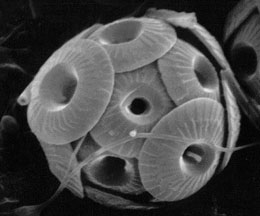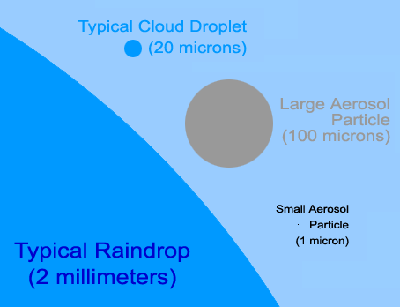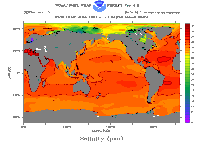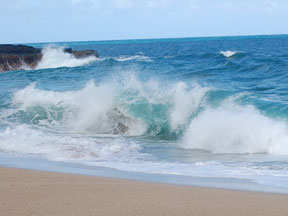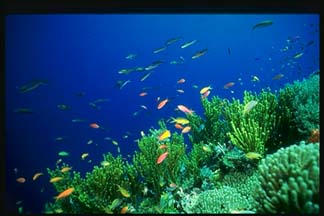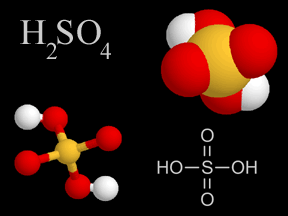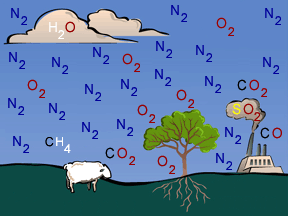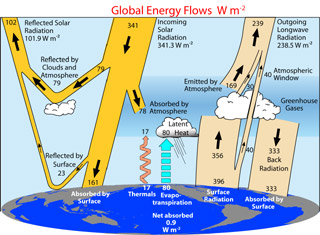Click on image for full size
Image courtesy of NASA/JPL, photograph by Stefan Gartner.
Sulfate Aerosols from Plankton
Aerosols are tiny particles or drops of liquid that float around in the atmosphere. For example, tiny flecks of smoke particles from fires or smokestacks are a type of aerosol. Some kinds of aerosols come from the ocean. Small particles of sea salt are thrown into the air by the spray from waves. Some microbes that live in the ocean give off chemicals that make aerosols, too.
Some types of plankton release chemicals that have sulfur in them. As these chemicals rise up into the air they can be turned into very small droplets of sulfuric acid! Chemical reactions in the atmosphere can turn this acid into various types of aerosol particles.
These tiny aerosol particles actually affect Earth's climate! Some particles reflect and scatter sunlight. Less sunlight makes it to the ground. That makes Earth just a little bit cooler. The aerosols also cause changes in clouds. They can cause more, smaller droplets to form, which makes it harder for the clouds to rain. Clouds that "hang onto" their water tend to last longer. Bright, white clouds also reflect sunlight away. That cools down Earth, too.
How can tiny microbes change the climate of a whole, huge planet? Remember that more than two thirds of Earth's surface is covered by oceans. That means there are trillions and trillions of microscopic plankton floating around. Plankton are by far the biggest natural source of aerosols which contain sulfur.
Humans also make lots of sulfur aerosols. The coal and other fossil fuels we burn make sulfur aerosols. Scientists think that about 70% of sulfur aerosols are made by humans. About 20% are made by microbes in the seas. Scientists who study Earth's climate want to know as much as they can about aerosols. That's why they are interested in studying all of the places aerosols come from.


